You have a Microsoft 365 subscription.
You create a retention label named Label! as shown in the following exhibit.
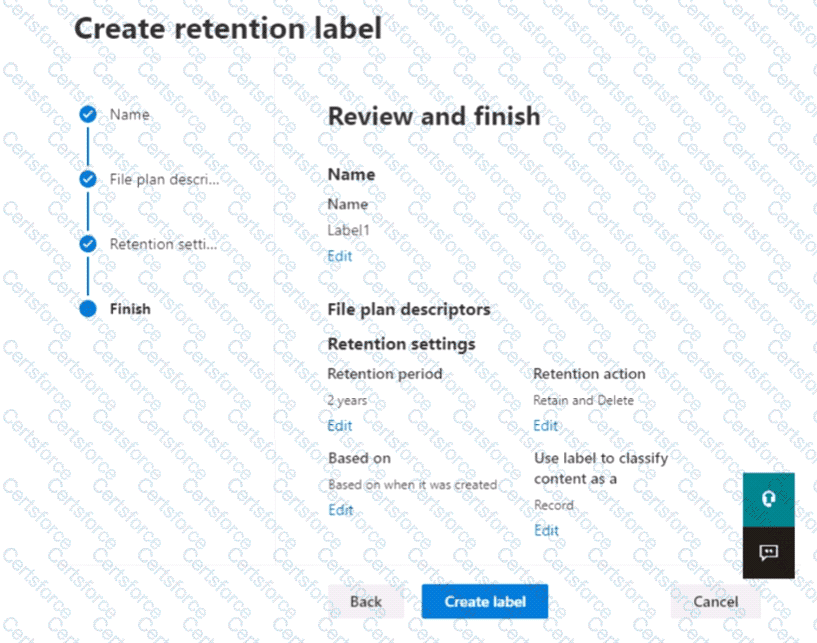
You publish Label1 to SharePoint sites.
Use the drop-down menus to select the answer choice that completes each statement based on the information presented in the graphic.
NOTE: Each correct selection is worth one point.

You have a Microsoft 365 E5 subscription that has data loss prevention (DLP) implemented.
You need to create a custom sensitive info type. The solution must meet the following requirements:
• Match product serial numbers that contain a 10-character alphanumeric string.
• Ensure that the abbreviation of SN appears within six characters of each product serial number.
• Exclude a test serial number of 1111111111 from a match.
Which pattern settings should you configure for each requirement? To answer, drag the appropriate settings to the correct requirements. Each setting may be used once, more than once, or not at all. You may need to drag the split bar between panes or scroll to view content.
NOTE: Each correct selection is worth one point.

You create a retention policy as shown in the following exhibit.
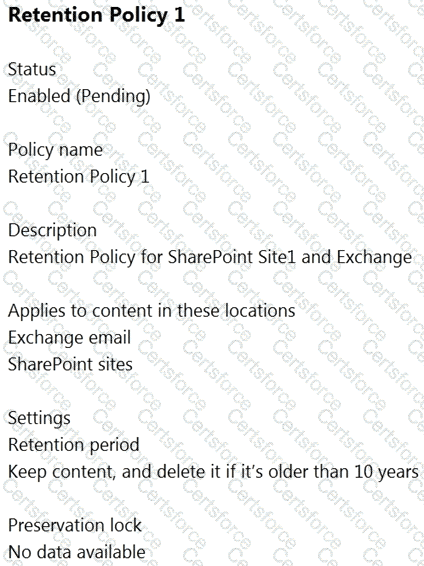
A user named User1 deletes a file named File1.docx from a Microsoft SharePoint Online site namedSite1.
A user named User2 deletes an email and empties the Deleted Items folder in Microsoft Outlook.
Where is the content retained one year after deletion? To answer, select the appropriate options in the answer area.
NOTE:Each correct selection is worth one point.
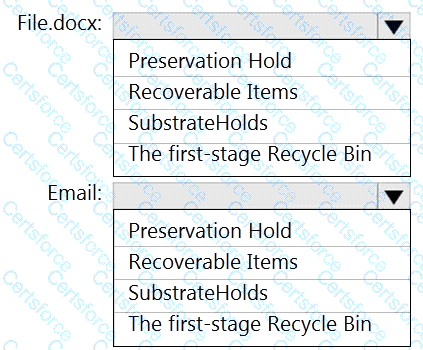
You need to create a trainable classifier that can be used as a condition in an auto-apply retention label policy.
Which three actions should you perform in sequence? To answer, move the appropriate actions from the list of actions to the answer area and arrange them in the correct order.

You have a new Microsoft 365 tenant.
You need to ensure that custom trainable classifiers can be created in the tenant.
To which role should you be assigned to perform the configuration?
Your company has a Microsoft 365 tenant that uses a domain named contoso.
The company uses Microsoft Office 365 Message Encryption (OMI ) to encrypt email sent to users in fabrikam.com.
A user named User1 erroneously sends an email to user2@fabrikam
You need to disable user2@fabrikam.com from accessing the email.
What should you do?
Vou have a Microsoft 365 ES subscription that contains a Microsoft SharePoint Online site named Site1.
You need to implement a records management solution for the files stored on Site1. The solution must meet the following requirements:
• The files must be retained for seven years.
• Files older than seven years must be deleted automatically.
What should you use to manage the files?
You have the retention label policy shown in the Policy exhibit. (Click thePolicytab.)
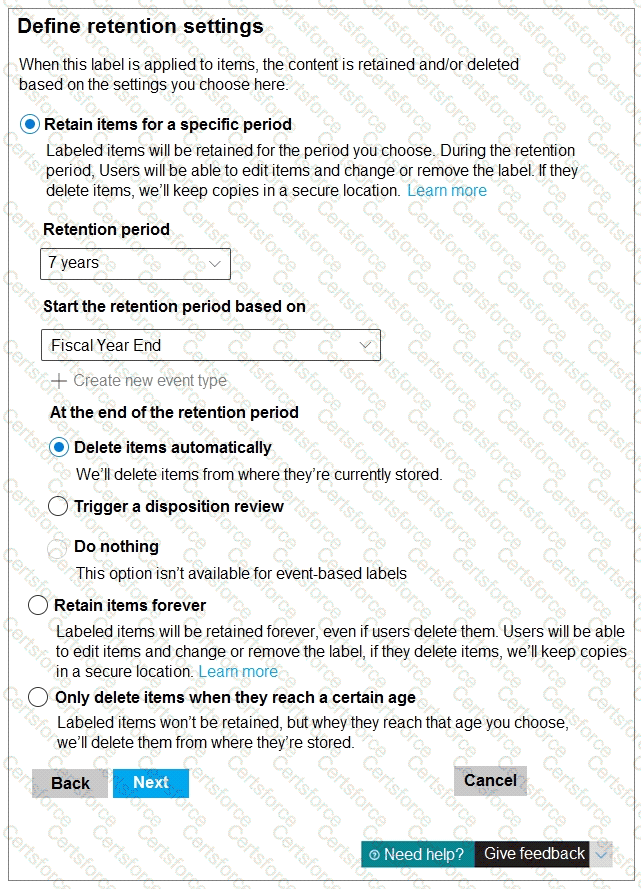
Users apply the retention label policy to files and set the asset ID as shown in the following table.

On December 1, 2020, you create the event shown in the Event exhibit. (Click theEventtab.)
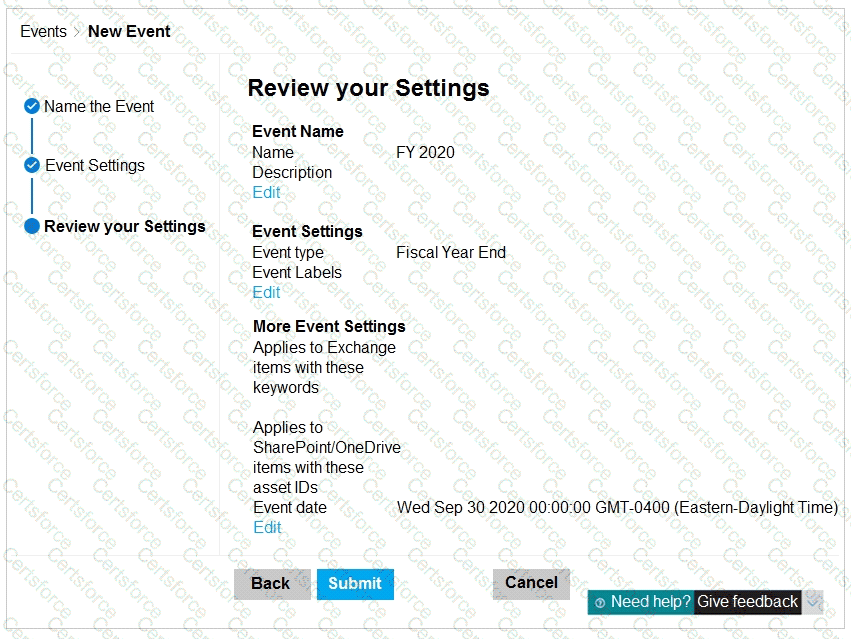
For each of the following statements, select Yes if the statement is true. Otherwise, select No.
NOTE:Each correct selection is worth one point.

You have a Microsoft 365 E5 tenant.
You need to create a custom trainable classifier that will detect product order forms. The solution must use the principle of least privilege.
What should you do first? To answer, select the appropriate options in the answer area.
NOTE: Each correct selection is worth one point.

Note: This question is part of a series of questions that present the same scenario. Each question in the series contains a unique solution that might meet the stated goals. Some question sets might have more than one correct solution, while others might not have a correct solution.
After you answer a question in this section, you will NOT be able to return to it. As a result, these questions will not appear in the review screen.
You recently discovered that the developers at your company emailed Azure Storage keys in plain text to third parties.
You need to ensure that when Azure Storage keys are emailed, the emails are encrypted.
Solution: You create a data loss prevention (DLP) policy that has all locations selected.
Does this meet the goal?